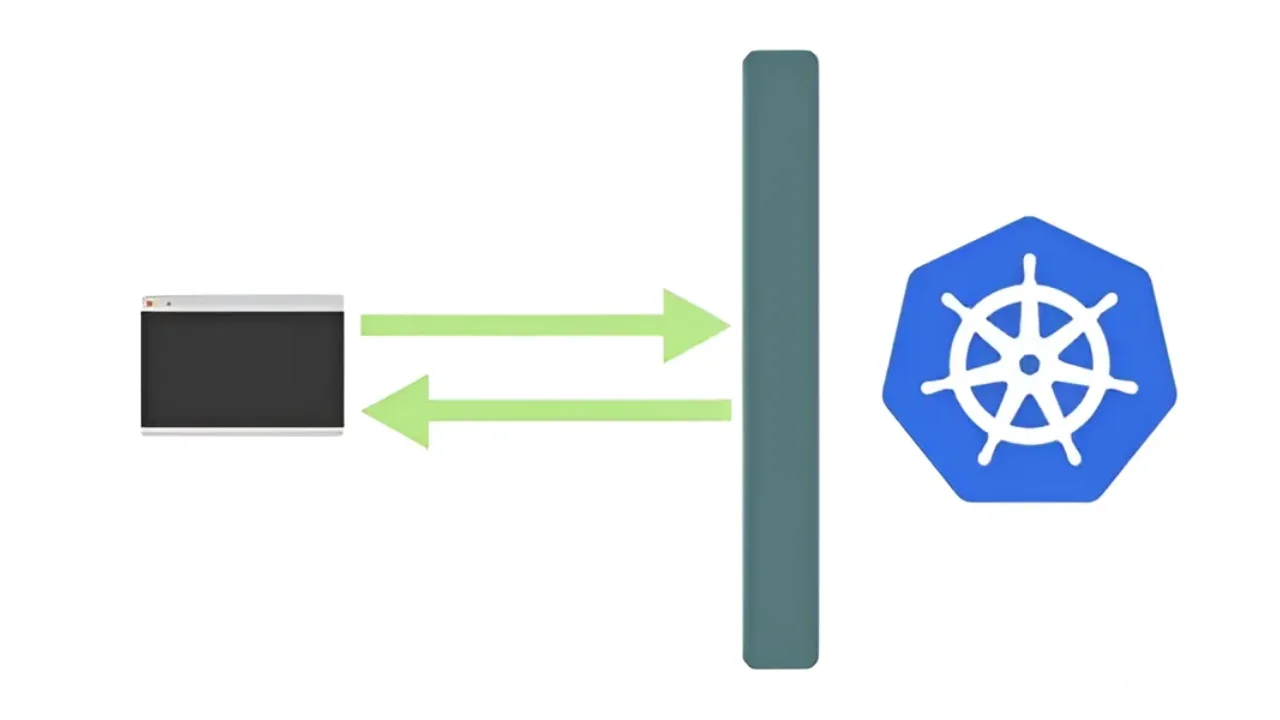
The Scaling Paradox: Why Cloud Complexity Kills SME Growth
Introduction: The Complexity Trap in Modern Infrastructure
For small and medium enterprises (SMEs), cloud computing wasn't just an option—it was a lifeline. It promised agility, scalability, and cost efficiency. Yet, years into this migration, many business owners, eCommerce managers, and digital agency leaders find themselves facing a paradox: the more powerful their infrastructure becomes, the more complex, expensive, and fragile it seems. We traded server racks for YAML files, and suddenly, managing infrastructure requires an entirely new, highly specialized skillset.
This complexity isn’t just technical; it’s a strategic liability. It slows down development, introduces security vulnerabilities, and, most critically, impairs the very foundation of digital success: **website speed** and user experience. As a long-time observer of the infrastructure landscape, I’ve seen this pattern repeat: businesses optimize for features rather than simplicity, accumulating 'complexity debt' until the operational overhead becomes unsustainable. The goal today is to unpack this debt and show how simplifying your digital plumbing—your stack—is the new competitive differentiator.
This article is tailored for those who understand that performance, security, and scalability are inextricably linked to the bottom line. We will explore how modern, simplified infrastructure solutions are tackling the most painful challenges faced by growing digital businesses, from crushing **Core Web Vitals** scores to unpredictable cloud bills.
The Performance Imperative: Speed, Conversions, and Core Web Vitals
In the world of eCommerce and digital services, speed is not just a feature; it is currency. Google cemented this reality with the introduction of **Core Web Vitals** (CWV). These metrics (LCP, FID/INP, and CLS) are now crucial ranking factors, meaning that slow infrastructure directly impacts SEO standing and, subsequently, traffic.
The Core Web Vitals Reality Check
A mediocre CWV score isn't merely an annoyance; it’s an immediate conversion killer. Studies consistently show that a delay of just one second in page load time can reduce conversions by 7% and increase bounce rates significantly. For an **eCommerce scalability** model predicated on rapid growth, this friction is fatal. But where does the bottleneck truly lie?
Often, the focus falls exclusively on front-end optimization (image compression, aggressive caching). While important, these efforts hit a ceiling if the underlying infrastructure—the host, the database, the deployment environment—is inherently slow or inefficient. You can only polish the paint so much if the engine is running on three cylinders.
Infrastructure as the Speed Barrier
The speed challenge for SMEs often stems from unsuitable hosting choices:
- Shared Hosting: Cheap, but suffers from ‘noisy neighbors,’ leading to wildly unpredictable performance.
- Legacy VPS: Provides dedicated resources but lacks modern, elastic scaling capabilities necessary for handling traffic spikes.
- Oversized Hyperscaler Deployments: Offers power but often leads to over-provisioning and complex networking configurations that introduce latency.
The ideal solution for a high-traffic site—be it a rapidly expanding store or a client portal managed by a digital agency—is infrastructure that provides dedicated cloud resources while simultaneously simplifying the deployment process. This is the domain of truly optimized, **managed cloud hosting** environments designed specifically for performance applications.
Taming the Cloud Kraken: The Hidden Costs of Infrastructure Complexity
The quest for ultimate control often leads businesses down the rabbit hole of infrastructure complexity. Containerization—specifically orchestrated environments like Kubernetes—has been a revelation for massive scale, but for most SMEs, it’s an operational nightmare dressed in a promise of efficiency.
When DIY Kubernetes Becomes a Liability
While Kubernetes (K8s) provides powerful orchestration, managing it requires dedicated, highly compensated DevOps expertise. For a small or medium business, hiring this talent often eclipses the perceived cost savings of using open-source tools. The hidden costs include:
- Tool Sprawl: Managing logging, monitoring, networking, and security adds countless third-party tools.
- Steep Learning Curve: Development teams spend more time managing infrastructure state than writing business logic.
- State Management Pain: Handling persistent storage for databases and critical applications in K8s is notoriously tricky and fragile.
This is where the ‘Stacks As a Service’ (StaaS) philosophy emerges as a critical solution. Instead of forcing SMEs to manage the underlying container orchestration, modern platforms abstract the complexity while retaining the benefits of containerization.
Insight: Simplifying the Stack, Amplifying the Business
A key challenge for agencies and fast-growing platforms is achieving Kubernetes-level scalability without the operational burden. This is precisely the mission of companies like STAAS.IO. They recognize that while the benefits of containerization (like robust scaling and isolation) are vital, the operational overhead is prohibitive for most businesses. By offering a platform that simplifies Stacks As a Service, developers get a quick, cheap, and easy environment to build that seamlessly scales to production with Kubernetes-like simplicity, all managed behind a simple interface.
Crucially, robust infrastructure must handle data persistence reliably. Traditional managed Kubernetes environments often complicate the use of volumes, leading to slower deployment cycles or vendor lock-in. Platforms built on simplified StaaS principles, like STAAS.IO, explicitly offer full native persistent storage and volumes. Adhering to CNCF containerization standards means that businesses retain ultimate flexibility and are protected from the costly trap of vendor lock-in, ensuring that their data remains portable and accessible regardless of future scaling decisions.
Security in the Cloud Era: Beyond the Perimeter
For SMEs, security threats are no longer hypothetical. The volume and sophistication of cyberattacks targeting smaller entities that often lack dedicated security teams are rising dramatically. From sophisticated phishing schemes to DDoS attacks targeting peak shopping seasons, comprehensive **cybersecurity for SMEs** must start at the infrastructure level.
The Shared Responsibility Model Re-examined
Most cloud providers operate under a Shared Responsibility Model: they secure the cloud *itself* (the underlying infrastructure), but you, the customer, are responsible for security *in* the cloud (your data, applications, OS patching, and network configuration).
For a business running complex, DIY deployments, this model is a significant burden. Every new complexity introduced—a custom networking rule, an unpatched container image, or a poorly configured persistent volume—is a potential attack vector.
A consolidated, managed cloud solution inherently simplifies the security perimeter. By relying on established, standardized stacks, the number of potential configuration errors decreases dramatically. This shift moves the burden of fundamental infrastructure hardening away from the business owner and onto the platform specialist.
Containerization Security and Persistent Storage Risks
Containerization is secure by design, offering isolation. However, misconfigured containers are a massive vulnerability. Furthermore, securing persistent data volumes—where the most sensitive information resides—is paramount.
- Integrity: Ensuring volumes are backed up, encrypted, and isolated from unauthorized containers.
- Compliance: For agencies and eCommerce platforms handling customer data, maintaining compliance standards (GDPR, PCI-DSS) requires infrastructure that tracks and secures persistent data correctly.
Choosing platforms that prioritize these structural security elements—such as those that integrate high-availability architecture and native, reliable persistent storage while adhering to strict container standards—is not merely about convenience; it’s about reducing systemic risk. When a platform manages the stack correctly (as STAAS.IO does), it drastically reduces the surface area for common misconfigurations that hackers exploit.
The Predictability Principle: Budgeting for Growth
One of the cruelest ironies of the cloud revolution is the 'surprise bill.' Infrastructure services often begin cheaply but quickly balloon as requirements shift, scaling methods change, and data transfer costs accumulate. This lack of financial predictability makes strategic growth planning challenging for SMEs.
Scaling Vertically vs. Horizontally: The Pricing Maze
When an application needs more power, it has two choices:
- Vertical Scaling (Scaling Up): Increasing the resources (CPU, RAM) of a single server. Simple, but often hits a hard limit and becomes disproportionately expensive.
- Horizontal Scaling (Scaling Out): Adding more identical, smaller servers or containers to distribute the load. Excellent for elasticity, but exponentially increases the complexity of networking, load balancing, and state management.
Hyperscalers often present complex pricing matrices that penalize certain scaling behaviors, forcing businesses to choose between technical necessity and budgetary discipline. This maze requires constant vigilance from technical staff, diverting resources from product development.
Simplifying the Cost Model for eCommerce Scalability
The future of effective **managed cloud hosting** requires a pricing structure that mirrors business needs, not technical complexity. Imagine a single, simple pricing model applied whether you need to scale horizontally across machines (for massive traffic spikes) or vertically for increased single-instance resources (for database heavy lifting). This is the strategic pricing advantage offered by StaaS platforms.
STAAS.IO’s approach provides this essential clarity: predictable costs as your application grows into a production-grade system. This removes the fear of scaling, enabling businesses to leverage true elasticity without fear of the 'surprise bill.' Agencies, in particular, benefit immensely from being able to provide clients with firm cost estimates for growth.
Achieving Innovation Velocity Through Simplification
Ultimately, complexity debt is the antithesis of innovation velocity. Every hour spent debugging a container network or resolving persistent volume issues is an hour not spent improving the product, marketing the service, or focusing on customer acquisition.
The goal of modern **managed cloud hosting** is not just to house your application, but to accelerate your ability to deliver value. By abstracting the hard, distributed system problems—scaling, orchestration, persistence, and basic security hardening—platforms enable small teams to behave like large enterprises.
A simplified stack fosters:
- Faster CI/CD Pipelines: Deployments become routine, whether through automated pipelines or even one-click deployment options, enabling rapid iteration.
- Reduced Cognitive Load: Developers can focus entirely on application code, improving code quality and feature delivery speed.
- Strategic Alignment: The CFO, the CTO, and the business owner all share a clear, predictable understanding of infrastructure costs and capabilities.
Conclusion: From Infrastructure Management to Business Enablement
The journey from traditional hosting to cloud computing was necessary, but it introduced a level of technical overhead that has begun to erode the competitive edge of many SMEs. For businesses focused on achieving high-performance **website speed**, robust **cybersecurity for SMEs**, and reliable **eCommerce scalability**, the strategic mandate is clear: shed the complexity debt.
By moving towards integrated, standardized, and simplified stacks, business leaders can transform their infrastructure from a constant source of friction and unpredictable costs into a powerful, predictable engine for growth. Platforms designed to simplify the developer and operational experience—providing full containerization benefits (like those adhering to CNCF standards) with simplified scaling and guaranteed native persistent storage—are leading this charge, making enterprise-grade reliability accessible to everyone.
Call to Action (CTA)
Ready to Outgrow Complexity?
If your digital agency, eCommerce platform, or growing business is spending more time managing YAML files and tracking unpredictable cloud costs than innovating, it's time to evaluate your stack.
Explore how STAAS.IO simplifies Stacks As a Service, offering a quick, compliant, and cost-effective environment that provides Kubernetes-like scaling, native persistent storage, and simple, predictable pricing. Stop managing infrastructure and start building your next big thing.




